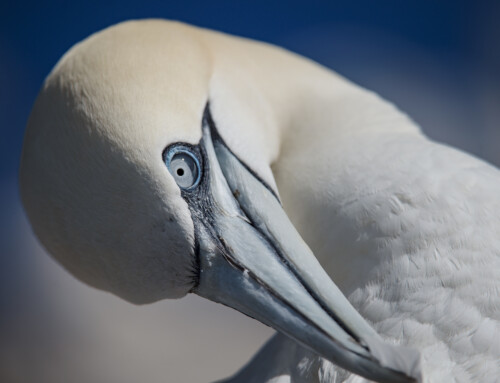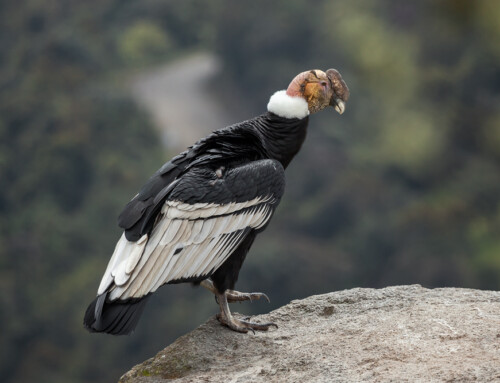Does warming influence the timing of breeding in a seed-eater?
LINKED PAPER
Temperature‐correlated shifts in the timing of egg laying in House Finches Haemorhous mexicanus. Watts, H.E., Jimenez, D., Pacheco, V., Vilgalys, T.P. 2018. IBIS. DOI: 10.1111/ibi.12676. VIEW
One of the most thoroughly documented effects of climate change on wild animals has been changes in the annual timing of breeding in birds (Walther et al. 2002, Parmesan & Yohe 2003). Rich and longstanding ornithological traditions, particularly in Europe, have provided a wealth of data on long-term breeding patterns. Analyses of such data have revealed that many species of birds have shifted to laying eggs earlier in the year over the past century and that these shifts are correlated with warmer temperatures (Dunn & Winkler 2010, Dunn & Møller 2014).
However, these previous studies have focused primarily on birds that breed in Europe and that feed mainly on animals, typically insects, during the breeding season. Thus, the extent to which the observed patterns can be generalized across geographic areas and across species with a range of diets remains unclear. A large gap in our knowledge concerns those birds with primarily plant-based diets – granivores, frugivores, nectarivores and herbivores – which constitute an estimated 28% of bird species globally (Burin et al. 2016).
To begin to fill this gap, we have examined patterns of reproductive timing in House Finches (Haemorhous mexicanus), a North American species with a seed-based diet. House Finches feed primarily on seeds throughout the year, including during the breeding season when they feed their nestlings a diet that is composed almost entirely of seeds (Badyaev et al. 2012). To investigate possible changes in the timing of egg laying in House finches, we used museum nest records (from the Cornell Lab of Ornithology, the Museum of Vertebrate Zoology, and the Western Foundation of Vertebrate Zoology,) for House Finches in California spanning more than a century (1895 to 2007) in combination with spring air temperature data across the state for the same period.
We found that in years with warmer spring temperatures, House Finches laid eggs earlier. This follows the patterns seen in many other birds. For House Finches, we estimate that eggs are laid an average of 4.6 days earlier for every 1°C increase in average spring temperature. This effect is on the upper end of the range that has been observed in other bird species, suggesting that House Finches are particularly sensitive to warmer temperatures with respect to the timing of egg laying. It remains to be determined if this sensitivity is directly related to their diet, but it is consistent with a general pattern that has been observed across invertebrates and vertebrates of greater shifts in annual timing in species that consume plants compared to those that consume animals (Thackeray et al. 2010).
Does this mean that all House Finches across California are laying eggs earlier now than they were a hundred years ago? Not necessarily. Although average spring temperatures have increased across the state, long-term changes in the timing of laying vary regionally. Only in the hottest region of the state, the southeast desert basin, did we find a long-term advancement in the timing of egg laying (Figure 1). Other regions of the state, which are considerably cooler on average, do not show the same changes over time. It may be that temperatures in these areas have so far remained low enough as to not induce long-term shifts.

It is important to note that the relationship between temperature and the timing of egg laying that we found in this study is correlational; this is also the case for other similar long-term studies. This means that we do not know if birds are adjusting the timing of laying in direct response to temperature, or if instead they might instead be responding to some other cue in the environment that is influenced by temperature. For example, birds may be responding to changes in the phenology (i.e., seasonal timing of events) of plants or insects, which may themselves be sensitive to temperature patterns.
In order to test whether House Finches adjust the timing of breeding in direct response to temperature, we conducted a separate study in which we experimentally manipulated the temperatures at which male House Finches were housed in the spring (Watts et al. 2018). In this second study, we found that male House Finches do not adjust their reproductive physiology to allow for earlier breeding under warmer conditions. Together, the results of our two studies suggest that the earlier egg laying that we found in free-living House Finches is most likely driven by either the response of females to temperature or by the response of birds to some other temperature-sensitive cue such as changes in plant phenology. In either case, the fact that free-living House Finches nest earlier in warmer springs adds to evidence that this may be a common pattern across species with varied diets, at least in temperate regions.
References and further reading
Badyaev, A. V., Belloni, V. and Hill, G. E. 2012. House Finch (Haemorhous mexicanus), version 2.0. In The Birds of North America (A. F. Poole, Editor). Cornell Lab of Ornithology, Ithaca, NY, USA. VIEW
Burin, G., Kissling, W. D., Guimarães Jr, P. R., Şekercioğlu, Ç. H. & Quental, T. B. 2016. Omnivory in birds is a macroevolutionary sink. Nature Communications 7: 11250. VIEW
Dunn, P. O. & Møller, A. P. 2014. Changes in breeding phenology and population size of birds. Journal of Animal Ecology 83: 729-739. VIEW
Dunn, P. O. & Winkler, D. W. 2010. Effects of climate change on timing of breeding and reproductive success in birds. In Effects of climate change on birds. (eds. A. P. Møller, W. Fiedler & P. Berthold), pp. 113-128. Oxford: Oxford University Press.
Parmesan, C. & Yohe, G. 2003. A globally coherent fingerprint of climate change impacts across natural systems. Nature 421: 37. VIEW
Thackeray, S. J., Sparks, T. H., Frederiksen, M., Burthe, S., Bacon, P. J., Bell, J. R., Botham, M. S., Brereton, T. M., Bright, P. W., Carvalho, L., Clutton‐Brock, T. I. M., Dawson, A., Edwards, M., Elliott, J. M., Harrington, R., Johns, D., Jones, I. D., Jones, J. T., Leech, D. I., Roy, D. B., Scott, W. A., Smith, M., Smithers, R. J., Winfield, I., J. & Wanless, S. 2010. Trophic level asynchrony in rates of phenological change for marine, freshwater and terrestrial environments. Global Change Biology 16: 3304-3313. VIEW
Walther, G.-R., Post, E., Convey, P., Menzel, A., Parmesan, C., Beebee, T. J. C., Fromentin, J.-M., Hoegh-Guldberg, O. & Bairlein, F. 2002. Ecological responses to recent climate change. Nature 416: 389-395. VIEW
Watts, H. E., Jimenez, D., Pacheco, V. & Vilgalys, T. P. 2018. Effects of temperature on the timing of breeding and molt transitions in house finches. Journal of Experimental Biology 221: jeb185058. VIEW
Image credits
Featured image: House Finch, Haemorhous mexicanus © Heather E. Watts
Blog posts express the views of the individual author(s) and not those of the BOU.
If you want to write about your research in #theBOUblog, then please see here.





